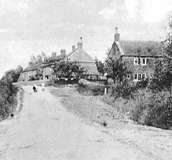Bremeridge Manor - A golden manor with a nugget of a history
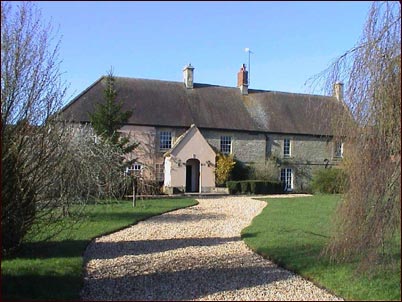
What caught my eye those five years ago, when I first saw the estate agent's details of an old farmhouse was not so much the period property prerequisites such as 'listed' and 'beamed'; it was the reference to gold treasure.
Apparently, a hoard of 14th century gold coins- Nobles to be precise, had been discovered in the grounds during the late 19th century, an example from which is now displayed in the British Museum, no less. The find was known as the Bremeridge Hoard after the name of the house (Anglo-Saxon 'bremel' for bramble and ridge well, for ridge), but more of that later. Was there more, I wondered as I leafed through the details, more gold that is, preferably lying in the ground, just under the surface, waiting for me and a spade to come along and make numismatic history- and a fortune to boot.
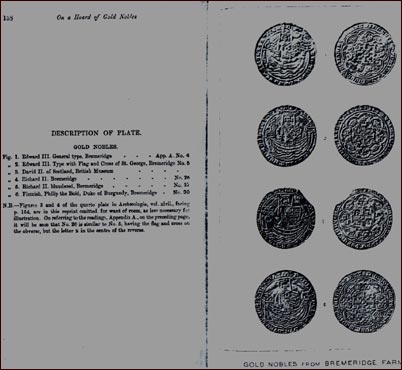
" Not a chance in hell!" said a friend. A quite knowledgeable friend really, to whom I had posed the proverbial question about the possibility of 'their being any more where that came from'. I was relating my intention of possibly purchasing the house. Richard was after all an international expert on coins and would surely confirm my hunch that there must be more. He told me he had researched some details about the actual Hoard. All 32 coins were struck between the middle and the end of the 14th century during the reigns of Edward 111 and Richard 11. He explained that they were most probably buried in what was known as a 'poke'. The basic principle of which is to stack the gold in an old sock, one on top of the other, and then to lower the 'tube' into a hole, made in the ground using a staff. An early form of bank that is actually mentioned in Chaucer. Was this where the word stockpile comes from? Anyway, whoever put them in the ground either died or was killed before he could claim them. And so they lay undiscovered for 500 years until they were turned up by some workmen building an extension.
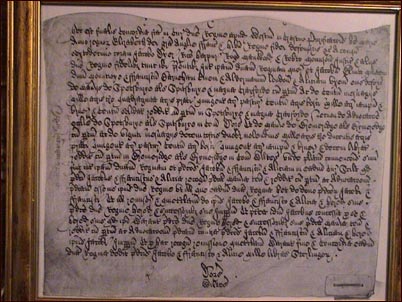
He was emphatic about a poke being invariably singular- in other words there was unlikely to be any more gold. In any case, he was convinced that the people who found the hoard would certainly have turned over the remaining ground in their search for more, but doubtless they discovered none. So this was the end of the treasure hunt - or was it. Little did I know that I had already discovered a treasure infinitely more interesting and valuable than a few coins.
It was a few months after I had moved in that I began to research the history of the house. It was at the back of my mind, as something I desperately wanted to do when I bought it. After all, I reasoned, if the equivalent of a King's ransom had been buried on the site in the 14th century, whoever lived there must have been fairly important to have possessed so much capital. It follows that the house may have been fairly substantial by the standards of the day and may have been the home of a person who might be expected to appear in official records. I was determined to find out as much as possible about the old farm house which sits on top of a ridge, with commanding views over the surrounding Wiltshire countryside and to the White Horse on the hill above Westbury; the site of the Battle of Edington-and another curious link to the house. However, it was only when I learnt that the house was at least 300 years older than the coins and was in fact 12th century in origin, that I realized that I had stumbled upon and bought a remarkable house with a very extraordinary history.
Shortly after moving in, I happened to be having lunch in London. Finding myself with some time on my hands I popped into Westminster City Library, just off Leicester Square. There I looked in the Victoria County Histories: you know the one, a massive volume for every county in the country, containing details of every historic house in the land. Lo and behold there it was, a whole section on Bremeridge. I was so excited that I nearly missed my luncheon appointment. I didn't, but the poor person who was my guest barely said a word throughout our time together as I quoted and re-quoted from the photocopy of the entry in the history book; indeed Bremeridge was a veritable cornucopia of history and illustrious names.
It turned out that Grade 11 listed, Bremeridge Manor, to give it its proper name is one of Wiltshire's more historic houses. It's truly mind boggling to discover that you can trace a history of continuous occupancy of your house from yourself, going back to 1166 when the first recorded owner died. That is 835 years years of knowing every owner, every lessee and every tenant. Three of the owners turned out to be sovereigns no less. Yes, that's right, two kings and a queen had owned my house.
It was in 1366 that the manor of Bremeridge was acquired by the monastic order of the Bonhommes of Edington, about three miles from Westbury. This order had been established at Edington at the instigation of the Black Prince. The village is the site of Alfred's victory over the Danes at the battle of Edington in 878. The priory, which unusually wasn't destroyed, became a possession of the Crown or rather of Henry V111 with the Dissolution in 1539. Sold off it was subsequently acquired by James Blount, Lord Mountjoy who, in 1574, conveyed it to Elizabeth 1st, the same year in which she paid a visit to nearby Longleat House. Did she ride past and see a 'Ye For Sale' sign or did one of her courtiers mention the house to her as being an ideal country retreat and bargain; as it is today. In 1609, James 1st sold the manor thus ending the royal connection.
One of the other very interesting aspects of the house is the front door as it bears the date 1488. It's one of those strap and pin type of oak studded doors that wouldn't look out of place as a Paramount film prop in a remake of Robin Hood. There's no key of course. To keep out marauding hordes of well local ravagers, the owner had to slide a wooden bar across the guides in the back of the door and insert one end into a bolt- hole in the wall. We now have a metal slide.
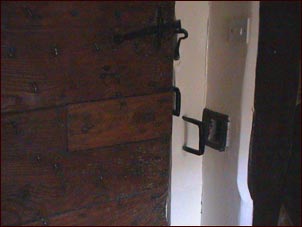
The manor house itself is built of coursed rubble with stone quoins and part rendered elevations with casement and sash windows under a tiled roof. Bremeridge has been completely refurbished with new plumbing and wiring within the last 10 years, yet it retains numerous original character features including fireplaces, and oak beams in many rooms.
In the 835 years things have changed, some are unfortunate such as the servants' bells being removed bar one. The bells' wiring can still be seen in parts of the roofspace. Flagstones, which once paved the entrance hallway, are now spread around the garden. Apparently somebody thought they were too dirty for the interior. Just think how many houses have been witness to this type of 'improvement', especially during the 1960s. In the dining room there is evidence of two separate fireplaces behind a 1960s brick wall. Two of the six fireplaces have been blocked up, but one in a bedroom looks as if it's just dying to be exposed and re-used. The floor in one of the two extensions built in 1878, when the gold was found, is now carpeted but is actually covered in the most splendid Victorian tessellated tiles. With fashions ever changing I wonder how long it will be before a future owner decides to expose them and do away with carpet altogether.
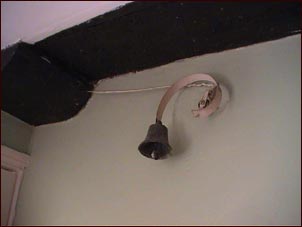
Of particular interest to architectural historians is the porch, believed to date from the 17th century. It still has the bench seats where the farm workers used to sit and wait for their wages, a la 'Far From The Madding Crowd'. The walls of the property that are up to two feet thick in places, suggest they may have formed part of the original 12th century structure. The coursed stone of the building is not a facing but the constituent material of the walls and would have been a further barrier to marauders! The roof space is cavernous and has one-foot wide, oak planks in the middle section. Lathe and plaster remnants and crude door latches suggest that somebody used to live up in the roof; perhaps a mad or deformed relative; but this is neither the time nor the place for mother-in-law jokes!
Just 13 miles south of Bath and 75 minutes from London's Paddington station, Bremeridge Manor with four reception rooms, utility room and study together with bath or shower rooms serving each of the five bedrooms is situated in approximately two acres of mature, formal gardens with a paddock. Interestingly, there are the remains of a medieval settlement about 400 yards due south of the building. Pottery shards and bits of ironwork, most of it undistinguishable, are regularly turned up during gardening; but so far no gold, though I did get excited over a farthing I found in the paddock. A courtyard at the rear of the property would be ideal for the erection of garaging and outbuildings, subject to normal planning requirements.
Occupying a rural setting with distant views over unspoilt countryside, this enchanting property ( even if I do say it myself) shares a most enviable peaceful rural situation with three other properties, converted from former farm buildings, and is approached from the Parish road by a private driveway of approximately a quarter of a mile in length. Finally I must mention the well at the back of the house. Presumably one of the reasons for siting the house where it is. Not surprisingly, it has been drained many times in the search for further gold but nothing has been found except an old pump at the bottom of the 30 feet or so of water. The water was tested by one of the previous owners and found to be absolutely pure. So forget the gold, it's obvious that a fortune awaits a future owner provided that he or she is happy to have a bottling plant attached to the house. I can just see it on the supermarket shelves - Bremeridge water - liquid gold.
Contributed by Evan Morgans
